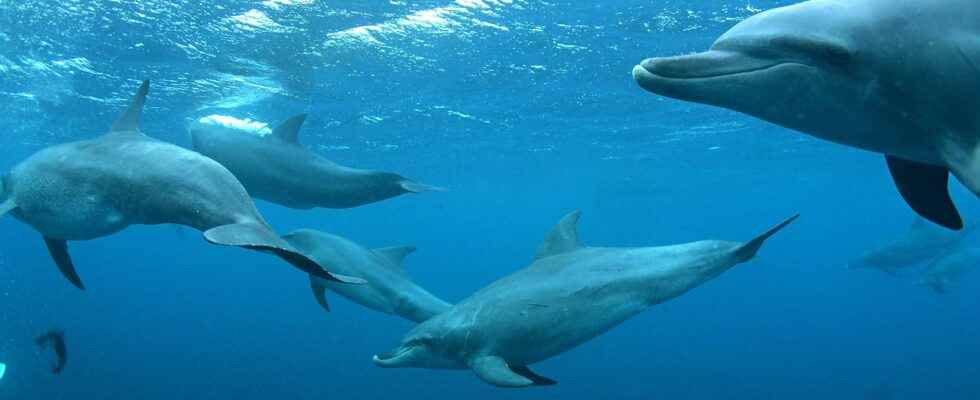For forty years now, researchers have been studying the behavior of dolphins that live near Shark Bay, Australia. To finally uncover the largest and most complex social network known to date between non-human animals. All this with an idea in mind…
You will also be interested
[EN VIDÉO] 1,500 dolphins play with a baby humpback whale Filmed by a drone, this amazing scene shows a poorly explained encounter between a large group of dolphins (about 1,500) and a humpback whale accompanied by its calf, off the Californian coast, in Monterey Bay. Swimming very close to the large cetaceans, the dolphins splash them. The whale, perhaps embarrassed, dives, followed by its calf, and the dolphins ride the waves as they do near boats.
More than forty different species of dolphins live in the world’s oceans. And one of them has been surprising ethologists for several decades now. The bottlenose dolphin of the Indian Ocean — Tursiops aduncus, for the purists. Because he seems to have developed a cooperation network of rare complexity. The most complex cooperation network in the world, even. Apart from the one formed by humans, we learn today from researchers of the Florida International University (United States).
For some forty years now, these researchers have been studying the behavior of dolphins in the waters of Shark Bay (Australia). They had already discovered that each male dolphin forms a close relationship with one or two other male dolphins. And that these pairs or triplets then find themselves in larger groups — of about fifteen individuals — which themselves, fit together in even larger alliances — going up to about fifty individuals . A little as if each dolphin was a member of a platoon, a company and a regiment.
This time, using data collected between 2001 and 2006 on more than 120 male dolphins, researchers from the Florida International University reveal how each of the dolphins studied is connected, directly or indirectly, to the others. Showing that these dolphins even have relationships with males beyond their three-tiered alliance system. This is how they ultimately form the greatest social network known to all species except humans.
Dolphins and humans, not so different
How ? By spending time together. By swimming and diving side by side. By stroking their fins. Or by communicating by whistling. And all of this seems to give them a very clear idea of who is an ally and who is not. Why ? In particular to increase their chances of reproducing. Because yes, it would seem that it is in particular for seduce females males associate. Also to defend against other dolphins who would be tempted to conquer the females coveted by a group. According to anthropologists from the University of Zürich, also involved in this work, it is even more the strength of third-order social ties that provides matter advantages. In the long term, moreover. Because these relationships can last for decades.
Anthropologists? Yes, you read that right. Because they had sensed that dolphin societies — just like those of our primate cousins – could constitute interesting models for understanding thesocial evolution and cognition of humans. Until then, in fact, no non-human animal had yet been caught forming alliances on several levels to achieve objectives.
These works, moreover, could well present themselves as one of the most convincing supports for “the hypothesis of brain social “. The idea that maintaining many relationships with fellow human beings favors the development of advanced brainsendowed with intelligence thrust. Characteristics that dolphins and human beings share.
Interested in what you just read?
